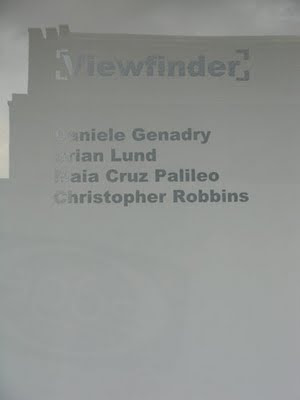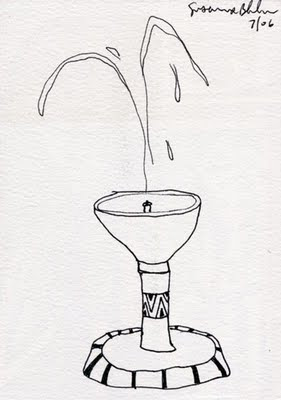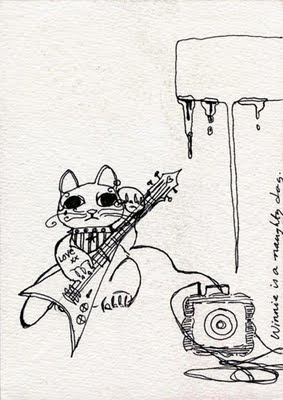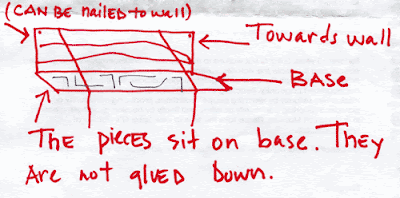(For more information about the “Viewfinder Project” click here.)
Last week I was in New York City and went gallery hopping. Toward the end of my visit in the gallery district of Chelsea, I noticed signage (seen below) for an exhibit titled Viewfinder at Artgate Gallery. Though I have been unable to find a statement about the exhibit online, I get the sense that the show has little to do with viewfinder devices. Rather, the title has to do with finding new talent through the Nars Foundation International Artists Residency Program. Although I took a nicely composed picture of the window displaying the exhibit announcement, complete with a reflection of the building across the street, I did not get many pictures of the exhibit (related images can be found in the links provided above).

Even though I know that my ideas are not completely original and feel that originality is finite, I felt something jarring about seeing an exhibit that also borrows the concept of a viewfinder. Am I just writing a series of reviews that present a view of specific artwork or can something conclusive be said about the way artists approach seeing and observation in the twenty-first century? Everywhere there is a potential view. So, what is important and how is this determined? Because I have many more “Viewfinders” to review, I wonder if it is inevitable that I will lose focus? Will I veer too far away from how a view is found and focus too heavily on what is in each unique picture?
Although I know that conclusions are inconclusive and I understand this paradox, I am still determined to make conclusions anyway. If one believes that the universe is an interrelated entity, then conclusions will also be beginnings. Thus, conclusions may be as relative to human interpretation as having an artistic view. However, it seems like it is the boundaries, both mentally and physically, that keeps us from drifting in a sea of random visions. Having a view is a first step toward an artistic conclusion. For me, as a writer, having thirty five to forty “Viewfinders” to review means taking a lot of small steps as I work toward a conclusion to this project. This leads me to know that patience is a requirement in gaining an insightful perspective.

Susanna Bluhm’s “Viewfinder”, Ink Drawing, 6″ by 4 1/4″
The “Viewfinders” featured above and below tap into a kind of randomness. I did not give very many requirements for the “Viewfinders” I mailed out. In the case of the work featured here, I mailed out “Viewfinders” to two artists I knew who both live at the same address. I received back one of the drawings from an addressed artist and the other from an artist I had not solicited (this was fine with me). I suspect both “Viewfinders” were made at the same time and quickly as if they were made as a part of a game. I feel that this mode of working led to a spontaneity and playfulness that a traditional view finding device (the kind typically designed for art making) seems to psychologically inhibit.

Amy Lin’s “Viewfinder”, Ink Drawing, 6″ by 4 1/4″
Two final notes: Susanna Bluhm has a wonderful website and will be exhibiting work at Michael Rosenthal gallery in San Fransisco. Lastly, in the note written on Amy Lin’s drawing (“Winnie is a naughty dog”), Lin is ironically and humorously referring to Susanna’s lovable pooch.














